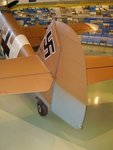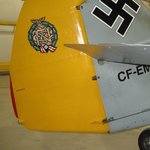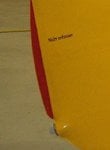Last week when I was at the RAF museum in Hendon, I saw a BF109G. Looking at the tailplane I wondered, where's the ruddertrim? See the picture below.
Usually you can see those little ruders in the vertical rudder but not on this one. Did I miss it somewhere? Was it normal on a Bf109 to not have a ruder trim? If so, had they other means of directional trim?
Usually you can see those little ruders in the vertical rudder but not on this one. Did I miss it somewhere? Was it normal on a Bf109 to not have a ruder trim? If so, had they other means of directional trim?



